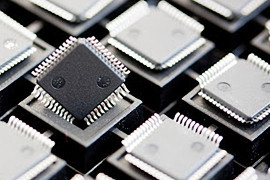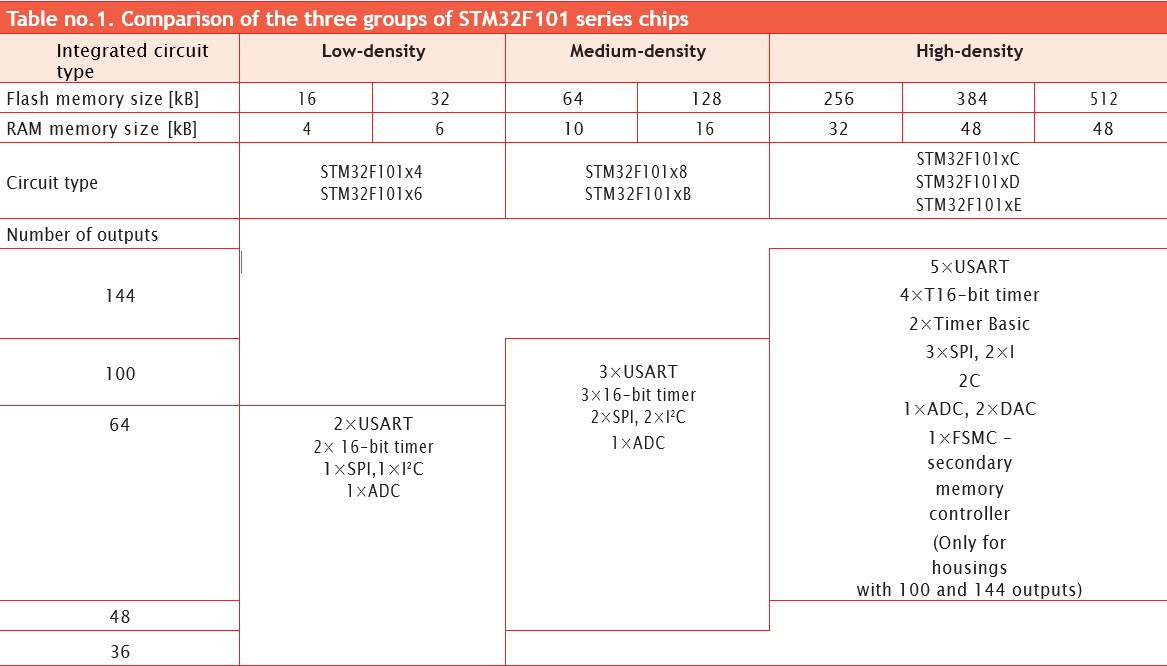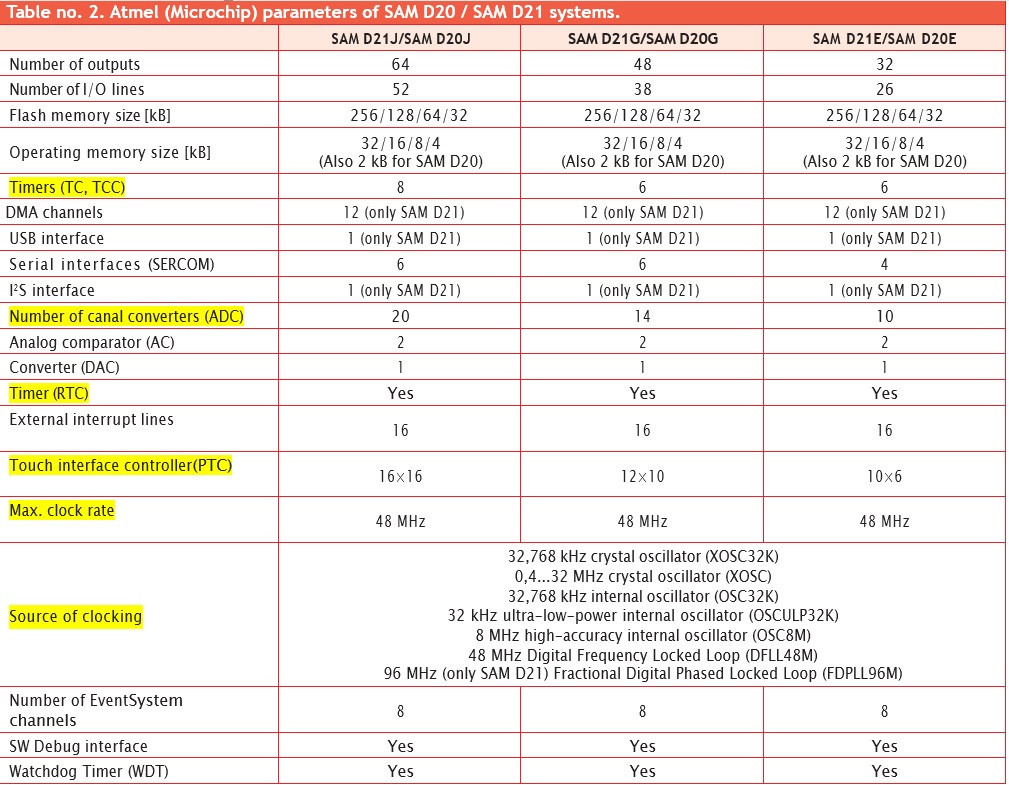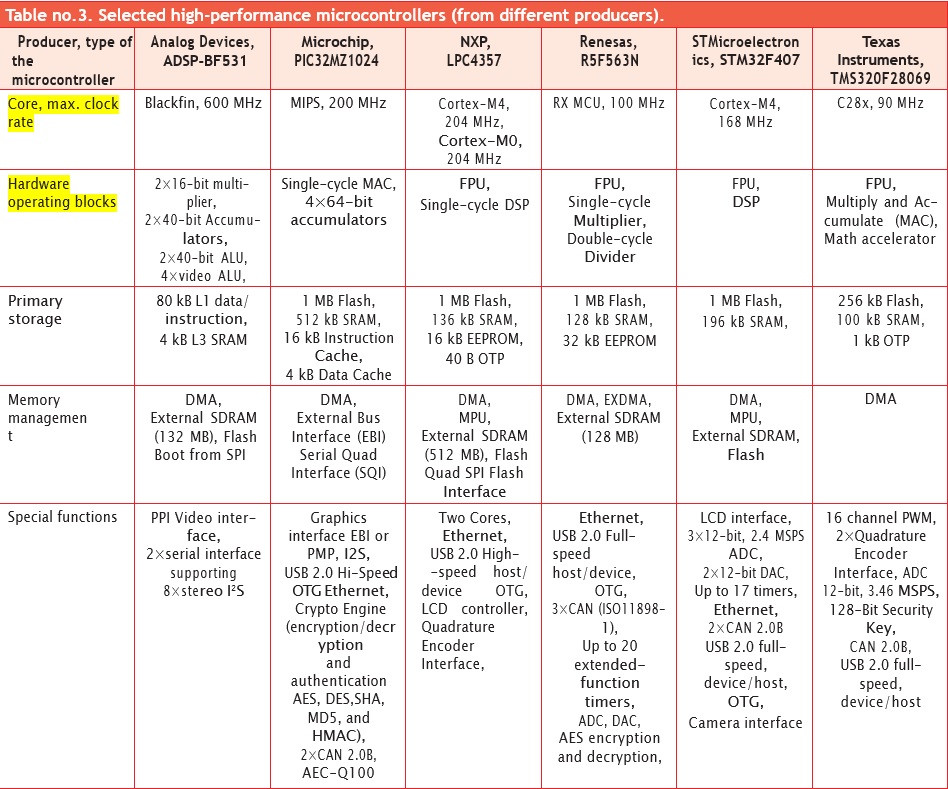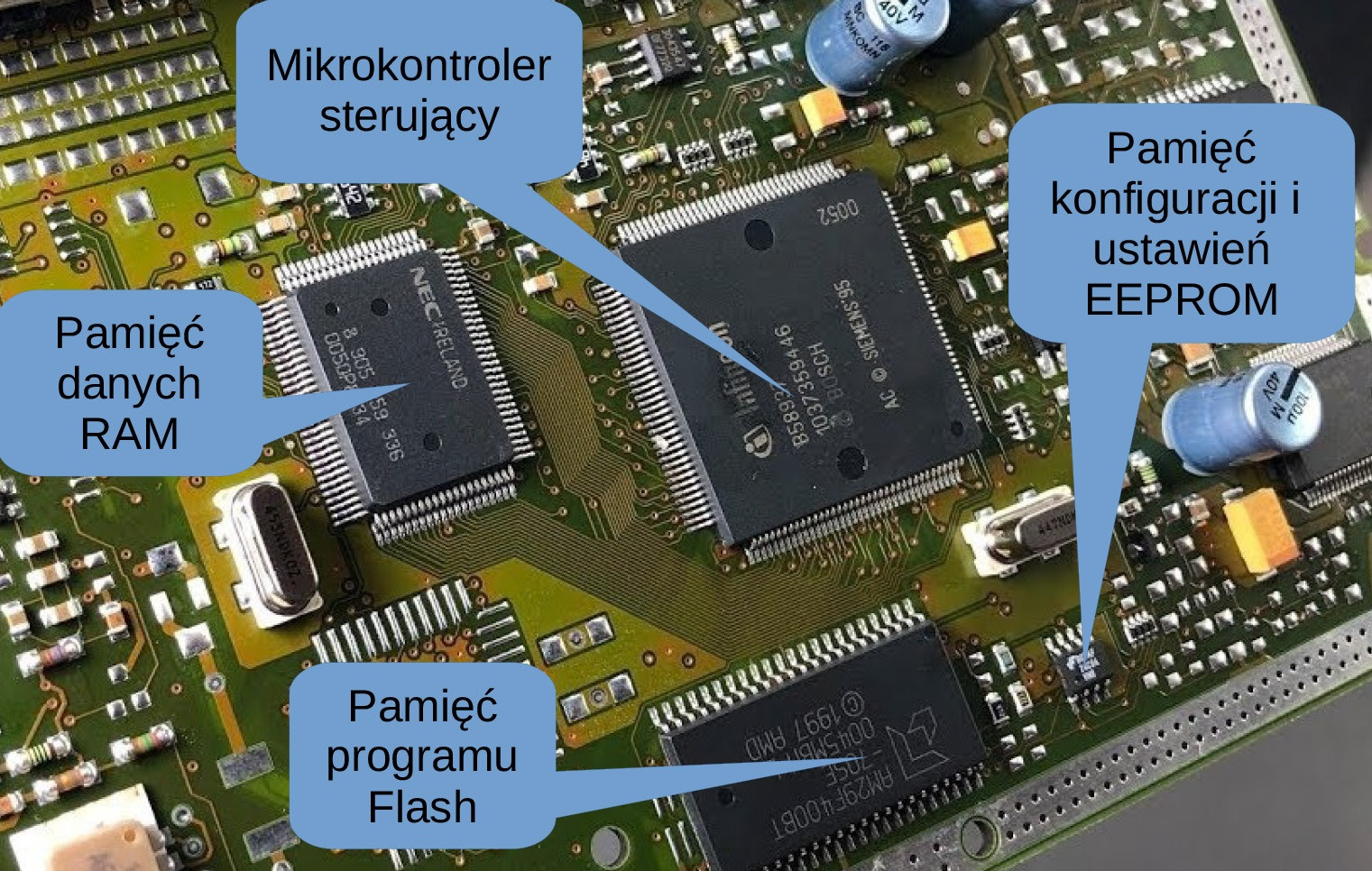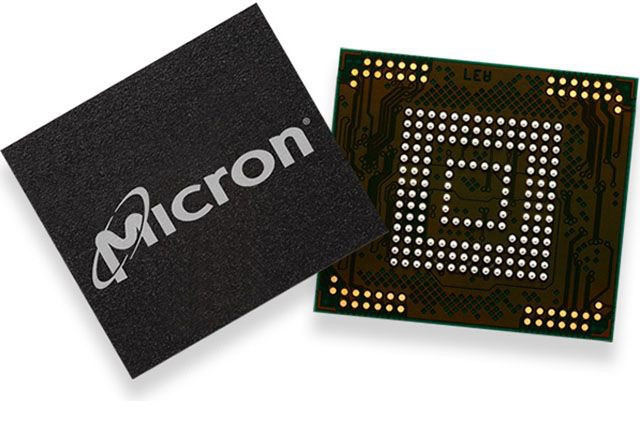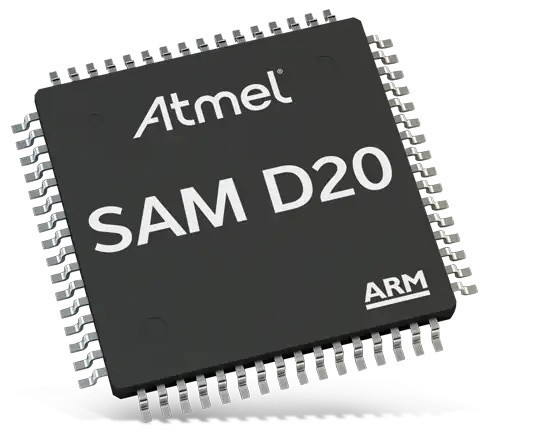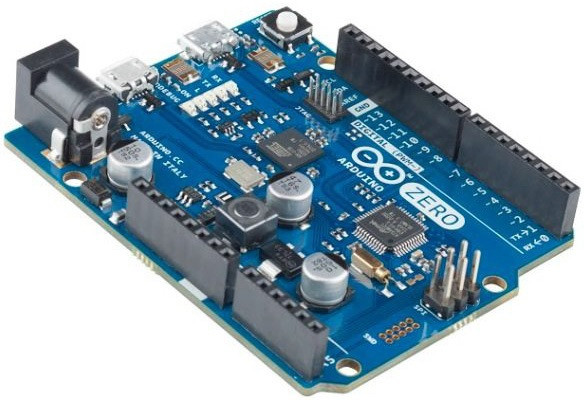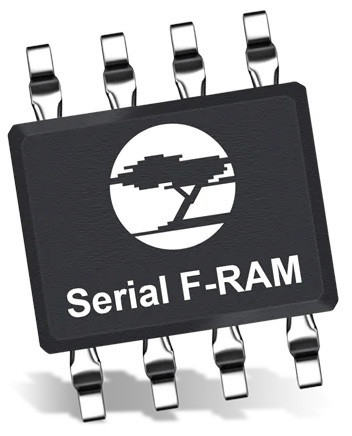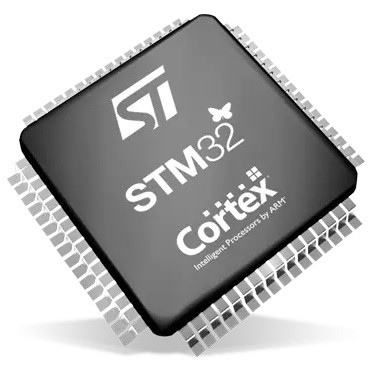Microcontrollers and memory for embedded systems
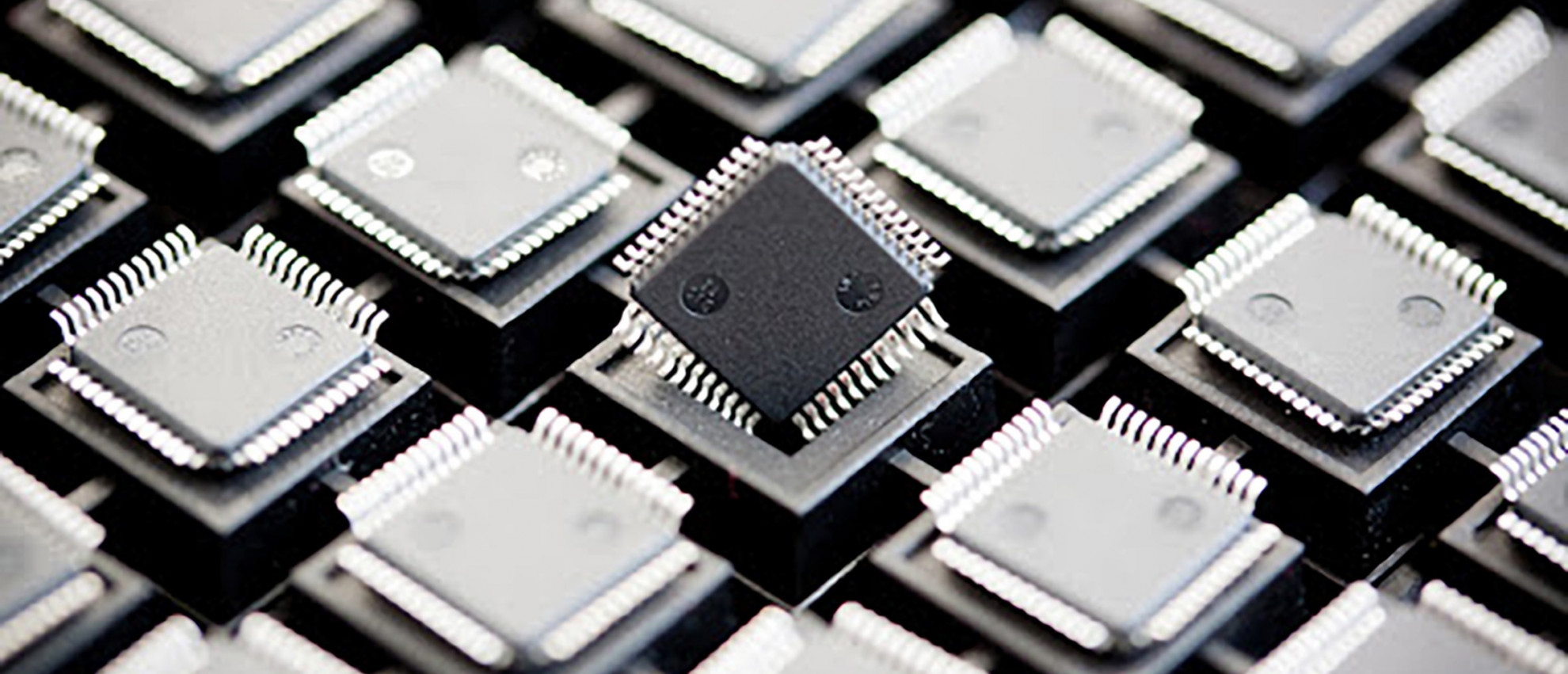 |
|
|
Almost all modern electronic devices are based on digital microcontrollers, even if they are a part of a purely analog device. Their uninterrupted usage growth is a result of constant evolution of those integrated circuits. Standardization of peripheral blocks as well as steady increase of computing performance and their unmatched energy efficiency opened the way for them to many new applications. On the other hand, many producers offer systems that are modestly equipped, but specialized in specific functions. This means that selection, of the right microcontroller for the project, is not easy due to so many solutions and additional conditions. A good solution for prototyping is to choose a microcontroller with large amount of memory and many peripherals. When the prototype version is fully functional, the hardware requirements can be precisely determined and a more economically adjusted. Finally, the availability of selected system must be carefully analysed, because recently, this can become a serious problem for the electronics industry. Cooperation with a distributor of electronic components, such as Micros, will allow you to efficiently go through these stages, and due to the particularly wide range of microcontrollers and memory, it will allow you to choose the optimal solution for each application. Versatile and scalable Very popular and frequently chosen microcontrollers are the STMicroelectronics STM32F101 series ones, equipped with an efficient 32-bit ARM Cortex-M3 core. They are available in many versions that differ in the list of built-in peripherals, memory size and the number of pins and kinds of housings. A big advantage is their pin compatibility - thanks to this, in the absence of hardware resources, you can just change the type of microcontroller without interfering in the PCB design. The software also does not require deep modifications, the reconfiguration ends with changing a few settings. Among the STM32F101 system we distinguish three groups: Low-, Medium- and High-density, which determine complexity of the component. A simplified list of parameters is shown in table no.1. Micros offers several types of systems of these series, available from stock: https://bit.ly/3hqiit1. Advanced and energy-efficient Many battery-powered applications require a high-performance control system with low energy consumption. Such requirements are met by microcontrollers with the ARM Cortex-M0 + core. One of the first groups of circuits of this type are widely used in the prototyping Arduino boards. They use microcontrollers made by Atmel (Microchip) - specifically the SAM D20 and SAM D21 series. They are available in 32- to 64-pin housings and operate at 48 MHz maximum clock frequency. The list of parameters of individual types of systems is shown in table no. 2. Among the integrated peripheral blocks, it is worth to mention timers that are capable of PWM generation, Atmel Event System for communication between peripherals without CPU involvement, 12-channel DMA direct memory access controller (SAM D21 only), Peripheral Touch Controller supporting up to 256 touch fields, such as buttons, sliders, and wheels. The great advantage of this family of chipsets is the support of the Arduino environment. Some of the Arduino boards are based on these integrated circuits (photo no.1). Creating software with the Arduino IDE means a lot of ready-made software libraries and a huge knowledge base in the form of tutorials, documentation, and forums. Micros offers several different systems from the SAM D21 and SAM D21 series: https://bit.ly/3tnbG35.
High-performance and fast Despite the high computing power of the aforementioned systems, they are not suitable for tasks such as sound or image processing, motor and drive control or the implementation of complex network functions. Advanced and fast microcontrollers have been created for such tasks - they are clocked at 100 MHz and above, equipped with high-performance cores such as Cortex-M4 and DSP, or they may contain hardware blocks for performing complex mathematical calculations, such as FPU. These are specialized systems, designed for advanced devices. In the offer of Micros, you can find representatives of this group of components from well-known producers. Selected ones of this category, along with a brief description, are presented in table no. 3.
Memory – the determinant of the system abilities
Small digital controllers and single board minicomputers contain not only controlling microcontroller but also separate memory chips. Simpler designs contain only a small memory storage for configuration and settings. EEPROM memory with an I2C or SPI interface is often used in this role. Sound and image processing devices require a large amount of operating memory due to the complex data-processing algorithms. Usually these are SDRAM memory chips with a parallel interface that allows fast transfer rate of large amounts of data. The most complex electronic devices contain 3 types of memory - the above-mentioned EEPROM - configuration and setting memory, SRAM / SDRAM - data memory and Flash for program memory. An example of such a solution is the engine controller - ECU (fragment of the PCB is shown in photo no.2). Micros offer includes several hundred of various memory chips from all well-known producers. In stock are following ones: • EEPROM of series 24 (with I2C) produced by Microchip, Atmel and ST • EEPROM of series 25 (with SPI interface) produced by Microchip, Atmel (to 64 kB) • EEPROM of series 95 (with SPI interface) produced by ST • Flash of series 95 produced by Microchip, Adesto • Flash of series 45 produced by Atmel, Adesto • Flash of series K9 produced by Samsung • Flash of series M29 produced by STM, Micron (to 16 GB) • FRAM (ferromagnetic memory) of series FM24 and FM25 produced by Cypress • MRAM (magneto resistive memory) of series MR produced by Everspin • SRAM of series 48 (with SPI interface) produced by Microchip • SDRAM of series IS42 produced by Integrated Silicon Solution • SDRAM of series MT41, MT48 produced by Micron • SDRAM of series W9 produced by Winbond
Photo no. 2. A fragment of a car engine controller board- ECU, with essential components marked. (RAM memory, Plash memory, EEPROM configuration and settings memory, Main microcontroller). Summary The semiconductor crisis that we are experiencing right now has changed the constructors' approach to new projects. Instead of microcontrollers with a large excess of performance, they look for chips that are less popular and less equipped, but available right now and in the near future. Cooperation with a supplier with such a wide offer as Micros gives a lot of freedom. It allows you to optimize the design in terms of efficiency and costs. Micros More information: |
Photo no 1. Many PCBs of the Arduino family use SAM D21 series microcontrollers, for example Arduino Zero.
|
| Source: "Elektronika Praktyczna" 2021/09, p. 52-55. | |
